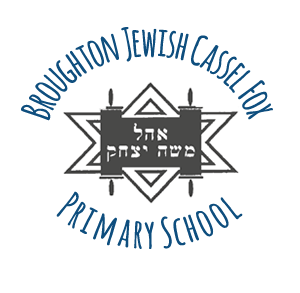Design & Technology Curriculum Statement
Intent
Our design and technology curriculum has been specifically tailored to meet the unique context of our school and is enhanced by our STEM project and Kodesh curriculum. It is designed to be broad and balanced, providing all pupils with the opportunity to master their learning and deepen their knowledge, making sense and giving purpose as to why we learn about design and technology.
At Broughton Jewish we believe that Design and Technology helps to incorporate independence, creativity and imagination, giving pupils the opportunity to design and make products that solve real and relevant problems within a variety of contexts, considering their own and others’ needs, wants and values. We recognise that Design and Technology can require pupils to draw on disciplines such as mathematics, science, engineering, computing and art.
We aim to build high levels of competence in the subject specific skills of:
- Practical Skills (e.g. cutting food safely, using measuring curriculum, selecting the appropriate tools and safety)
- Making and design skills
- Evaluating their own work and their peer’s work.
Implementation
Design and Technology is taught through the framework of the 2014 National curriculum. The principles and content of its requirements have been carefully placed at the heart of the school’s programme of study in design and technology.
We follow a curriculum overview based on topics. These plans are closely linked to the school’s Age- Related Expectations (ARE’s) in design for each year group, which allows a consistent application of the curriculum throughout the Key stages. A curriculum coverage file is kept for each cohort. This enables both class teachers and the subject leader to monitor coverage and identify progress made throughout the lifetime of a cohort in the school.
This is done through the following process:
- Planning/ research: children research the topic and consider what they will make. Skills used are discussed and children create a plan for their creation.
- Creating: skills are put to the test and children have the opportunity to use resources available to make their creation and have the support of an experienced Artist.
- Finalising: referring back to plan, taking on board feedback from peers and using success criteria to complete creation.
- Evaluating: referring to success criteria to check that it has been met, considering what worked well and what would change next time.
Assessments are carried out in various forms:
- Final pieces of work can be assessed by class teacher.
- Whole-class assessment based on AREs.
Outcomes from these are used to inform teachers which areas have been covered and to what extent the year-group achieved the AREs. This combined with other forms of monitoring help to inform aspects of learning that need to be strengthened to improve the quality of provision and to enhance pupil progress.
Impact
A high quality of design and technology education aims to develop a range of skills that are transferable to other curriculum areas, particularly Science, Mathematics, Science and Art. Children will:
- Acquire and effectively use new vocabulary.
- Think critically through evaluation of existing products.
- Build skills that enable them to design, build and make high quality products.
- Understand, use and apply the principles of nutrition in learning to cook.
- Develop their problem solving skills and apply to real world design problems.

